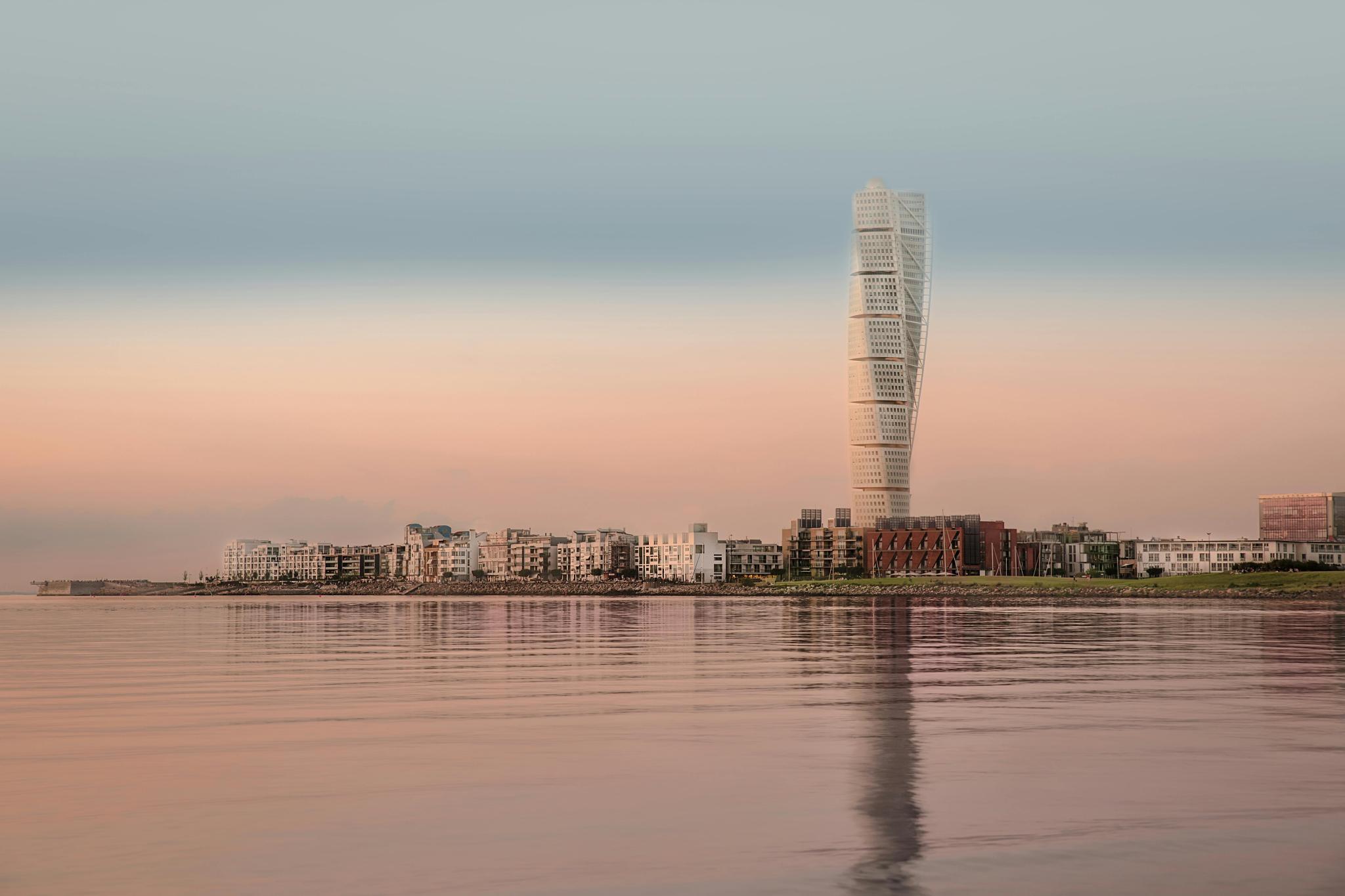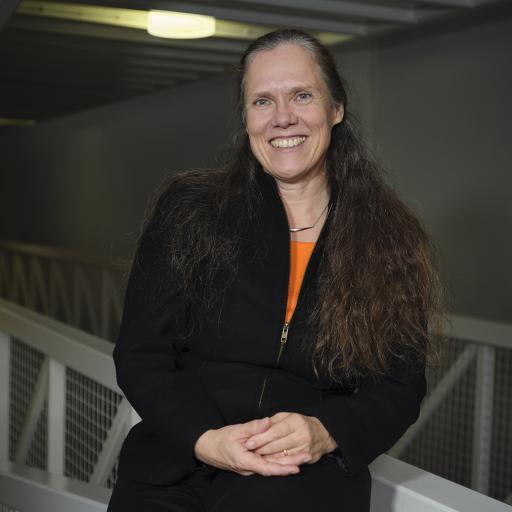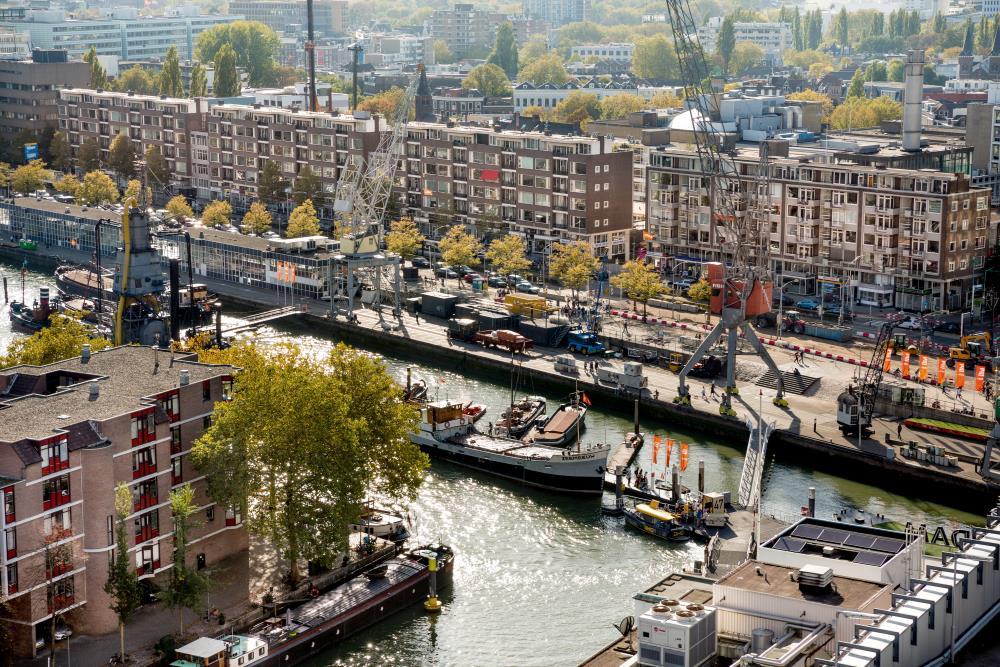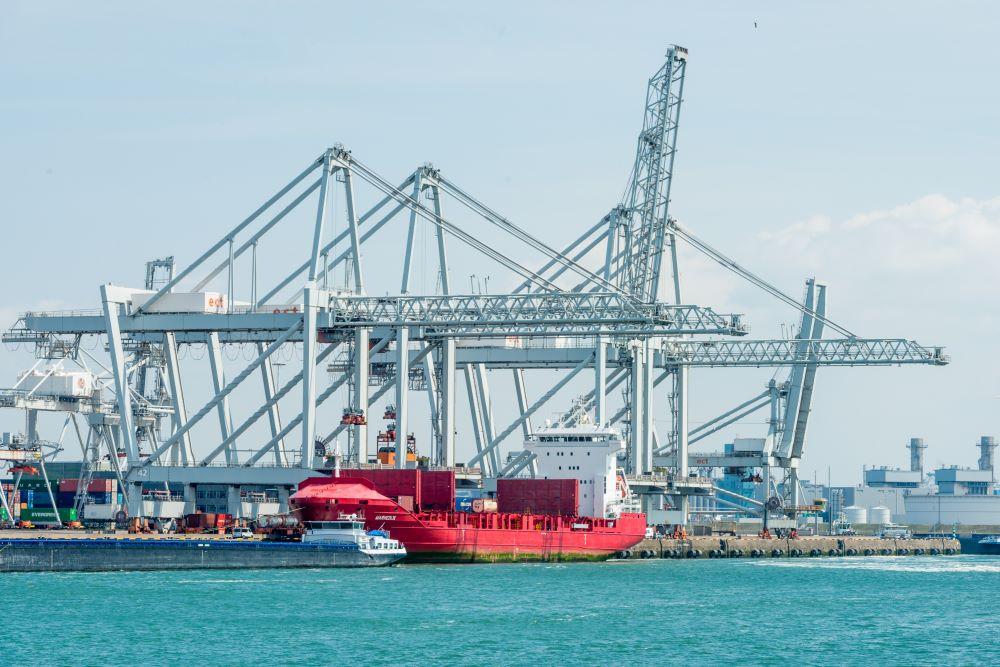In 2050, the world will look very different from today. LDE professors Carola Hein and Peter Scholten reflect on the role of cities, ports and the transitions that will shape the future.
By Hans Wetzels

The future of port cities in the post-industrial era
To say that we live in a time of transition is an understatement. Global economic and political discussions are shifting at lightning speed. At the same time, various and often intertwined crises are throwing the living environment of many Europeans into disarray. To understand the connection between climate change, deindustrialisation, the rise of China, and the lack of affordable housing and migration, looking at port cities is a good starting point, says Peter Scholten, speaking from Malmö, Sweden
'Ports exist by the grace of mobility and migration. They embody transition. From their
perspective, the changes Europe is going through
in this post-industrial period are not unique. Port cities like Malmö or Rotterdam are already uncovering the future.’
Scholten has been a visiting professor in Malmö, Sweden, for a year since early 2023. Regarding thematic interests, his research focuses on migration and population composition in cities. He also sits on the UNIC network of post-industrial cities on behalf of Rotterdam Erasmus University and is director of the LDE Centre for Governance of Migration and Diversity.

'Here in Malmö, they have completely torn down the industry in the old harbour districts and then rebuilt them in a sustainable way as residential facilities,' Scholten says. 'In the Netherlands, sustainable living is often a class issue. People who have enough money to buy solar panels look down on the residents of Rotterdam-Zuid who cannot afford them.
In Sweden, they want to make sustainable housing accessible to as many people as possible. Here, the post-industrial sustainability transition is being worked on ecologically and socially. By sustainably redeveloping such an old harbour district, the city moves forward in leaps and does not remain stuck in the past.'
 Overall picture
Overall picture
As director of LDE's Port City Futures Centre, Carola Hein is an expert on port cities. She, too, believes port areas can play a central role in understanding how Europe can shape the future.
‘Just like marine air flows that blow inland from the sea, we also cannot understand cities without the hinterland, and vice versa. You then have to study the water-energy-food nexus especially closely,' she explains. 'To take care of people in a city, you need water, food and a functioning energy supply. That all comes from hundreds of kilometres away.'
'To really understand migration flows and the energy transition, you also have to look at what is happening in mining areas or the agricultural sector. For sustainability, a few solar panels in the port are not enough. You also have to look at railway lines or inland navigation. For sustainability experts, this means that, in order to see those overall pictures, they need to work more with colleagues who study logistics flows, for example.'
Hein grew up in the German port city of Hamburg and currently works as a professor of Architecture and Urban Planning History at TU Delft. Since the rise in the number of shipping containers in the 1960s, the function of ports within cities has already been subject to considerable change. She shares: 'The fact that the port is withdrawing from the city is nothing new. In the 1960s, the containerisation of shipping started, and we suddenly no longer needed big warehouses to store stuff.
Since then, the port has been creeping away from the city, and port cities have been renewing their waterfronts. This can be done in many different ways: in London's docklands, large office buildings are everywhere, Hamburg has bet on multifunctionality, and Amsterdam is aiming for residential development.'

The redevelopment of former port areas, like today's sustainability transition, should have been done with an eye on social and aesthetic outlook, as well as attention to economic and sustainability prospects. And that has by no means always been done perfectly: 'The problem with some waterfronts is that they strictly become city and the remnant of the port becomes decoration. Why fill a place with access to the open water with ugly block boxes or offices? That does nothing for people, nature or the sustainability transition.'
Epicentre of transformations
Within the global economic web, the balance of power has shifted considerably in recent decades, and Europe has lost much of its manufacturing industry. According to Hein and Scholten, port cities can indeed act as laboratories for shaping a post-industrial future—as long as the network around them is also accurately mapped.
'For port cities with refineries it does not matter where exactly the raw materials come from,' says Hein. 'In this context, extraction areas where coal or oil is extracted within the international economic network offer no guarantee of a sustainable future. Those very places are replaceable and can, therefore, stagnate.'

As long as this is not forgotten, in a post-industrial context too, port cities are pre-eminently where business elites, politicians, workers and migrants from all corners of the world are present, and thus, a lot of creativity, Scholten believes: ‘Post-industrial cities always have a big gap between rich and poor. This also plays a role in port cities, but they have also developed their own resilience because super-diversity has become the norm.
From our LDE centre, we look at the cities where diversity and mobility manifest themselves most strongly. People arriving and leaving is a permanent part of how Rotterdam, Antwerp or Malmö develop. That extreme dynamism often also makes them the epicentre for other forms of transformations, such as in sustainability and climate.'
More vulnerable
To connect all these possible crises, developments, and innovations, Hein and Scholten both consider it important for scientists from different fields to work together. While ports and coastal areas are often forerunners in terms of migration and diversity, they are, in fact, much more vulnerable than the hinterland due to climate change.
'Port cities are, by definition, dependent on diversity and collaboration. You trade with other continents, and thus, you see different languages and cultures. That’s why, for instance, Arab traders had a mosque in China centuries ago." Hein also explains: "Coastal areas are the first to notice and influenced by the rise of sea level. That's precisely why port cities need to seek much more collaboration.'
Rotterdam is, in that sense, simply the largest port for Germany.'
Coastal cities often seem more similar to each other than to the inland or to the nation-state to which they belong. Therefore, discussions about the future of the Netherlands concern not only the Netherlands but also access to the sea: 'Rotterdam is, in that sense, simply the largest port for Germany. Especially now that global power dynamics are rapidly shifting, we must learn to think as Europeans, not Dutch or Germans.'

